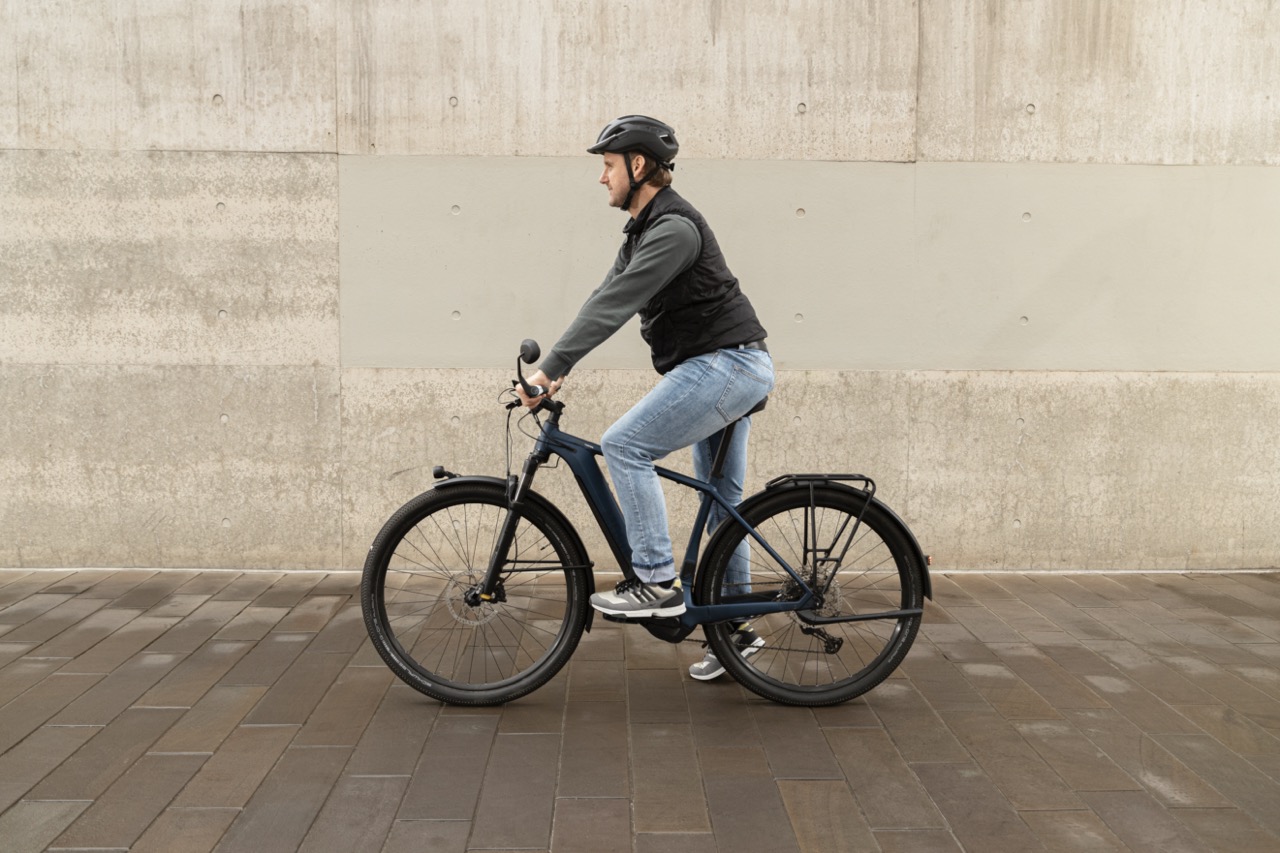Calculate Optimal Frame Size

What frame size is correct for me? Here you will find all the information for optimizing frame size and bike adjustments.
Calculate the optimal frame size
Whether you're riding a bike for the first time or you're a seasoned pro, choosing the right frame size for your bike is crucial for comfort, efficiency, and enjoyment while riding. A frame that is too large or too small can lead to pain and injuries. In this article, we explain how to determine the right frame size and what factors you need to consider. Also, check out our video on the topic on our Bike Ergonomics channel if you prefer visual support.
Why is the right frame size important?
The correct frame size affects your posture and power transfer to the bike. A frame that is too small often leads to a hunched seating position, while a frame that is too large stretches you out and impairs your control. The right frame size, on the other hand, ensures:
- Comfort: A suitable frame ensures that you sit comfortably, and your joints are not stressed. Not only the distances, for example, between the saddle and handlebars are important, but also the saddle itself has a huge impact on healthy and comfortable cycling. Use our Saddle Selector to choose the optimal saddle for you.
- Efficiency: With the right frame size and the corresponding optimal saddle height, you can transfer your power to the pedals efficiently. If you mainly ride with clipless pedals, check out our TP1 series for precise and easy cleat adjustment.
- Safety: A well-fitting bike allows you better control and handling. This also includes a properly adjusted cockpit. You can learn how to easily adjust it yourself in this video.
How do I calculate the frame size for my bike?
To calculate the right frame size, you need to determine your inseam length. The term “stand over height” is often used. Experts and bike fitters mainly use this technical term, and so does Ergon. This is the basis for frame calculation.

Measure inseam length
- Take off your shoes and stand with your back against a wall.
- Clamp a book between your legs so that it touches your crotch.
- Measure the distance from the floor to the top edge of the book.
The described method is the easiest way to determine this value with household items. If you want it a bit more precise, try our Fitting Box. With it, you can measure many other values and then perfectly adjust your bike to your body.
Frame size for different bike types
You can now use the determined inseam length to calculate the appropriate frame height for different bike types.
Frame calculation for different bike types:
- City bike: Inseam length x 0.66 = frame height in centimeters
- Trekking bike: Inseam length x 0.66 = frame height in centimeters
- Mountain bike: Inseam length x 0.226 = frame height in inches*
- Road bike: Inseam length x 0.665 = frame height in centimeters *Please note: for mountain bikes, the frame size is mainly given in inches, hence the different calculation compared to other bike types.
Overall, these are just guidelines that can vary depending on the construction of the bike frame and the type of bike.

Other factors to determine the correct frame size
In addition to inseam length, other factors also play a role in choosing the right frame size:
- Height: Your overall height can also be an indicator of the right frame size.
- Upper body and arm length: These measurements affect the reach to the handlebars.
- Bike type: Depending on the bike type (city bike, mountain bike, road bike, gravel bike), different frame sizes may be optimal.
- Reach and stack: Reach is the horizontal distance from the bottom bracket to the center of the head tube. It affects how stretched or upright the rider sits. Stack is the vertical distance from the bottom bracket to the top edge of the head tube. It determines the height of the handlebars in relation to the bottom bracket and affects riding comfort and posture. If you take reach and stack measurements from one of your favorite bikes, you can use this data to narrow down the frame sizes when buying a new bike.

Tips for optimal bike adjustment
After determining the right frame size, it is important to optimally adjust your bike. Here are some tips:
- Saddle height: Adjust the saddle so that your leg is still slightly bent at the lowest point of the pedal stroke. Feel free to watch our Bike Ergonomics video on this.
- Saddle tilt: The saddle should be level or slightly tilted forward to avoid pressure on the genitals. We also have a video on professional adjustment for this.
- Handlebar height: The handlebars should be adjusted so that you can take a relaxed posture and do not experience pain in your wrists or shoulders. Our video on proper cockpit adjustment provides further tips.
Conclusion
Choosing the right frame size is crucial for comfort, efficiency, and safety when cycling. With the right measurement method and the appropriate adjustments, you can enjoy the best riding experience. Use the tips and tools mentioned above to find your perfect frame size and optimized bike adjustments. And if you haven't seen it yet, our video on the topic covers all the important points again.